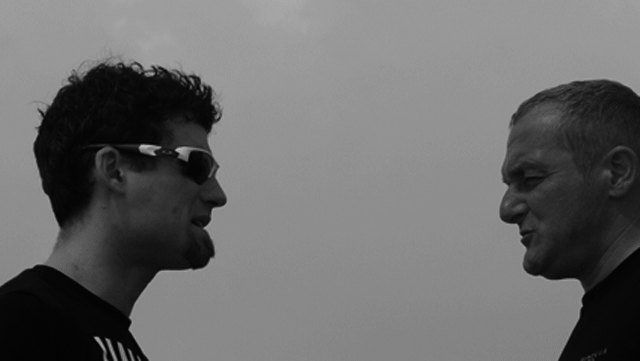Stress is a transitional state on the edge where border physiology and pathophysiology turns into a fuzzy line, in other words it’s distinction between well-being and illness becomes blurred, a familiar condition to all of us. There is probably not a single day on which we don’t use this word.
Walter B. Cannon an American physiologist introduced 1914 the term stress into biology. It was borrowed from the field of physics and describes the force that produces strain on a physical body (i.e.: bending a piece of metal until it snaps occurs because of the force, or stress, exerted on it).
The French physiologist Claude Bernard and the American physiologist Walter B. Cannon could be called the inventors of stress and the concept of homeostasis, a model for the bodily regulation processes. In his book the Wisdom of the Body, 1932 Walter B. Cannon followed a holistic concept of the body in which interior balance was achieved by self-regulatory adaptation processes. Another key figure in the history and popularization of stress was Hans Selye in 30ties. He connected stress with the general adaptation syndrome. Here stress is reduced to a biological process of adaptation to sustain homeostasis (interior balance).
In this chapter I want to focus on acute stress situations and their impact on our body.
Using the term needs a definition first. I chose the one that explains stress as a condition under which the stress system mounts a stress response. In line with this definition stress factors are stimuli that jeopardize the homeostasis (equilibrium) of our organism (body and mind).
The more connected we became during the last centuries and decades the more stressful we felt our lives to be. This process of continuously shrinking space changed our perception of time tremendously. The rhythm of our internal clocks is still by far slower than our outside time devices make us believe. This discrepancy leads to conflicts that may cause stress to various extents in the different individuals.
Nowadays our stress situations are not directly life-threatening anymore, but on the long run they may at least contribute to a massive impairment of our quality of life. Especially when turning chronic stress can be extremely harmful. But this will be the topic of another chapter.
The stress we usually experience in our everyday life is something very relative. Because what is stress for one is not necessarily stress for another. Also how we cope with strong and timely limited stress differs from individual to individual.
In contrast absolute stress that can be lethal unites us. Our lives then depend on the stress system operating fast and concisely. Looking back in our evolution when we were still hunters hunting big wild animals was such a possibly deadly enterprise. Deeply ingrained into our body are the chains of processes that take place in our body under stress. These mechanisms of action remained unchanged over thousands of years – at least the changes if present are invisible to us observers until today.
Dealing with stress situations is exhausting for all involved bodily systems. If we cast an eye on all the prevailing illnesses in our societies, stress has got its share in all of them.
Biological basics of the stress response
The stress response is not a conscious process. Usually consciousness is only switched on after the traumatic (stress) event, then when it would already be too late for an adequate life-saving reaction.
First and foremost extreme situations of stress need a well coordinated and perfectly timed biological stress response. It is initiated, maintained, controlled and contained by the immune system, the central nervous system (CNS) with its sensorimotor part and its huge autonomous network of neurons, and then the hormones such as cortisol and adrenaline, so essential for the communication among all bodily parts, and many more. All these components are tightly intertwined and have to interact closely when it comes to mount a stress response.

The whole system of complex regulatory circuits that makes up the stress system is modulated from the outside by perceptions and their interpretations, by the flow of antigens that constantly puts pressure on the immune system via the mucosal linings in the intestines, lungs etc., and many other stimuli from the inside such as blood pressure, pH, body temperature or the blood sugar level, etc.
The regulatory network that is located in the brain constantly compares actual values send from the periphery with the set-values and induces the respective adaptations in the periphery of the body. The periphery fires the executed results right back, again the process of comparing takes place. This happens with a frequency that comes close to a continuity. If a stress response is mounted after a short active phase all involved systems are dedicated to control a deterioration. All these activation events happen within less than a minute.
Biestmilch has proven to be a very powerful stress modulator. It makes you more stress-resistant and less susceptible to all kind of health hazards. This is the case for several reasons.
Reason 1 As you may know epithelial cells cover all body surfaces. The turnover of these cells is extremely high. That makes them especially sensitive to injuries. Epithelia are our gates to the world. Especially the ones connecting us to the world from the inside (bronchi, lungs, stomach, gut etc.) need to permanently deal with stress factors. If these cells are dysfunctional, it has a serious impact on our well-being. Studies suggest that Biestmilch makes these cells more robust towards various stress factors, be it heat, pH shifts, nutrients, toxins or mechanical forces.
Reason 2 Immunoglubins are key molecules in sustaining the body’s immune balance. They form a dense network throughout the body. The function of this network is essential for autoimmunity and allergy preventions. Immunoglobulin are an integral part of a strong immunity. Studies have shown that the immunoglobulins in Biestmilch enter the body through the epithelia and unfold their regulatory effects within massive immune system of the stomach and the gut. In the lumen of the gut they act as bacteria and toxin scavengers, inside the body they exert regulatory functions.
Reason 3 Lactoferrin and Lactoperoxidase are natural antibacterial agents that protect your gut.
Reason 4 Factors with the potential to foster communication among cells, initiate their differentiation and growth, play another important role when it comes to the regeneration of cells and epithelia in specific.
Reason 5 Anyhow Biestmilch should be seen as a whole. Its effects are manifold due to its natural multivalent composition similar to our blood serum. The overall effects of Biestmilch can be summarized as modulating inflammatory states and modulating the milieu of the cell that is more or less inflammatory depending on the extent of stress. There is not one illness where inflammations don’t play a crucial role.
The components listed above should give you an idea of the complexity of this substance, and about the fact that a lot of research is going on around it. But it is not easy to look at all the elements of Biestmilch at the same time. Therefore scientists have to reduce the complexity. They can only focus on a few molecules at a time. Of course the results are flawed because the whole is more than just an addition of the single molecules, so are the effects.
Reason 6 It is your experience that counts. Nevertheless the following wants to give you some rules of thumb how you can take Biestmilch.
Strong but timely limited stress exposure 
Examples: Intensive training sessions, competitions, job challenges, family duties, night shifts, traveling, jet lag, extraordinary mental and/or physical demands.
Recommendations for use
Stressful well-being – the preventive approach
If episodes of stress make you more susceptible to illnesses, it is recommended to take Biestmilch especially during this period. Experience shows that a cure of 3 months can help a lot. Repeat this cure whenever you expect to drift into such a stress situation again. Whether you choose the capsules or the chewy tablets is up to you. Both are perfectly suited to lay the foundation for a more stable immunity. The standard amount of 900 mg suffices. This equals one chewy tablet or 3 capsules.
Stress leads to the breakthrough of the underlying disease
If this is the case, it is highly recommended to take Biestmilch until the symptoms subside. The amount needed varies from individual to individual. We recommend the capsules because you can adjust the daily amount you take very individually. One capsule contains 300 mg of bovine colostrum (nothing else). You can easily quadruple the daily amount if needed.
Short intensive episodes of stress
If you feel generally depleted and fatigued, take a BIEST BOOSTER, with 4000 mg Biestmilch and 500 mg the natural caffeine extract Guarana it can really support you in overcoming this sensitive period in which you can easily acquire an illness.
Take the BIEST BOOSTER, if you you feel for it. Experience will quickly tell you when this is the case.
Increased susceptibility to infections
Again we recommend a cure with Biestmilch for at least 3 months. Whether you decide for the capsules or the chewy tablets is put to you. Choose the one which suits your lifestyle more.
Longterm or recurrent stress exposure
Chronic stress is going along with states of chronic inflammations. This is a condition that can be really dreadful. All the prevailing illnesses in our Western societies are related with chronic inflammatory processes, be it cancer, obesity, atherosclerosis or cardiovascular diseases and many more. The cases who are that privileged that they can escape the stressful environment are rare. Therefore taking influence on our lifestyle is the only option many of us (not all of us either) have got.
Biestmilch has the power to down-regulate the inflammatory milieus in our body. The longer the chronic states prevails the more deleterious they become for the body. At this point curing meets prevention.
With Biestmilch you can positively influence the chronic inflammatory states and on the long run the illnesses that may prosper on this soil.
Recommendations for use
If you want Biestmilch to unfold its sustainable effects of appeasing the inflammations in your body, then you have to take it regularly over a lifetime. The body needs time to change. To really benefit from such a change in lifestyle can take a year and more.
It suffices to take the standard amount of 900 mg Biestmilch every day.
If you prefer the chewable tablets, take one per day. One tablet contains 900 mg Biestmilch (bovine colostrum).
If you prefer capsules, then take 3 per day. One capsule contains 300 mg Biestmilch (bovine colostrum).






